How to Make a Subway Map with John Tauranac
Hear from an author and map designer who has been creating maps of the NYC subway, officially and unofficially, for over forty years!


Depending on your perspective, the transformation of the Meatpacking District is either one of New York’s greatest success stories or biggest tragedies. It’s no secret that the area has gentrified to a rather alarming extent. The old slaughterhouses and meat packing plants have been replaced by designer shops, nightclubs, and swanky hotels. The Belgian block streets that were eerily abandoned in the 1980s and ’90s now see a constant stream of people at all hours of the day and night.
The compact neighborhood, sandwiched between Chelsea and Greenwich Village, stretches from 8th Avenue to the Hudson River and from 17th Street down to Horatio Street. Like much of downtown Manhattan, it was originally a Native American settlement and trading post. Its proximity to the Hudson River ensured its importance as a center for commerce, which evolved into a center for meatpacking specifically. According to the Meatpacking District BID, there were 250 slaughterhouses and meatpacking plants there in 1900 and by the 1930s, the neighborhood was the nation’s third-largest producer of dressed meat. Read on for ten fascinating secrets of the Meatpacking District.
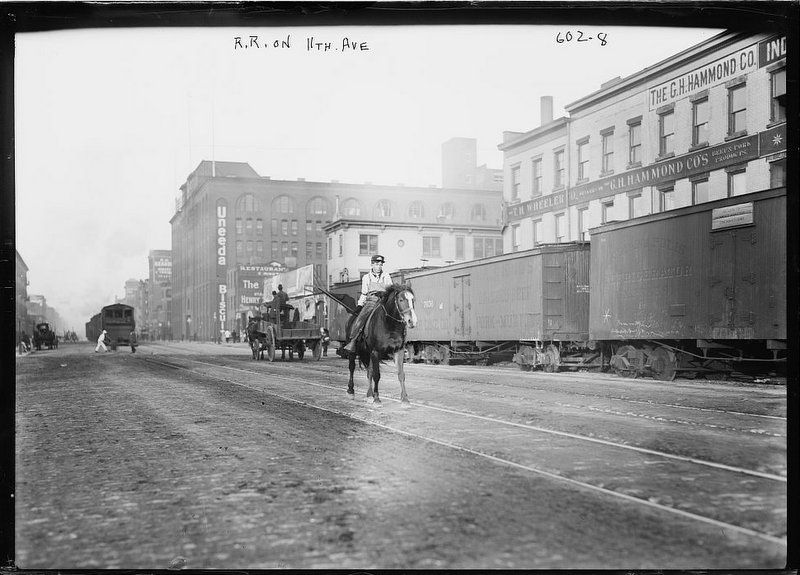
By the 1840s, the area was a thriving commercial district, with three-story Greek Revival rowhouses where merchants set up shops on the ground floor and lived on the upper floors. In 1850, the Hudson River Rail Road arrived, transforming the neighborhood from a small village to a major commercial center. Freight train tracks ran up 10th Avenue at street level with no barriers to protect pedestrians and cars from the trains transporting food and vegetables, dairy, and other food to the city. As you can imagine, this led to a high number of casualties (over 500 by 1910), which earned the avenue the moniker “Death Avenue.”
In a bid to solve the problem of freight train-caused fatalities, a city ordinance created the West Side Cowboys. That’s right, actual cowboys recruited from the Wild West rode alongside the train tracks waving a red flag — or red lantern after dark — to warn drivers and pedestrians about oncoming trains. This continued until 1941, when George Hayde was the last cowboy to ride down 10th Avenue, escorting 14 freight cars filled with oranges.
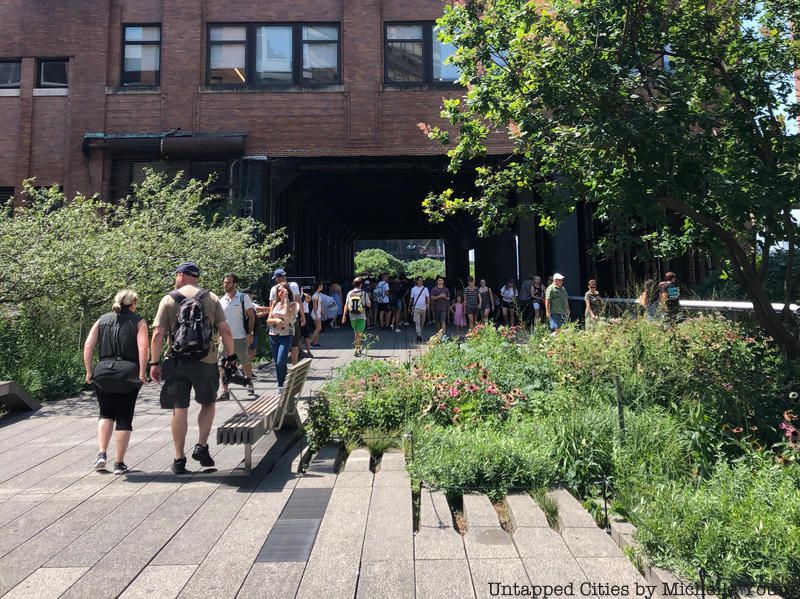
The High Line, which now attracts millions of visitors every year, was created on the abandoned elevated railway tracks built in 1934 to replace the street-level tracks on Death Avenue. Unsurprisingly, it was Robert Moses who proposed the West Side Improvement Project, which the city approved in 1929. Dubbed the “West Side Elevated Line,” the train tracks cut through buildings, including the Nabisco factory. They were only used for about 30 years before becoming obsolete due to the rise in trucking.
The decline began in the 1960s and by the ’80s, all train traffic stopped and the railway was abandoned. Weeds grew rampant as nature reclaimed this industrial relic. Former Mayor Rudy Giuliani tried to tear the elevated railway down, but Friends of the High Line, formed by Joshua David and Robert Hammond, successfully campaigned for its conversion to an elevated park inspired by the Coulée Verte in Paris. Designed by James Corner Field Operations and Diller Scofidio + Renfro and Piet Oudolf, the first section of the High Line opened in 2009.
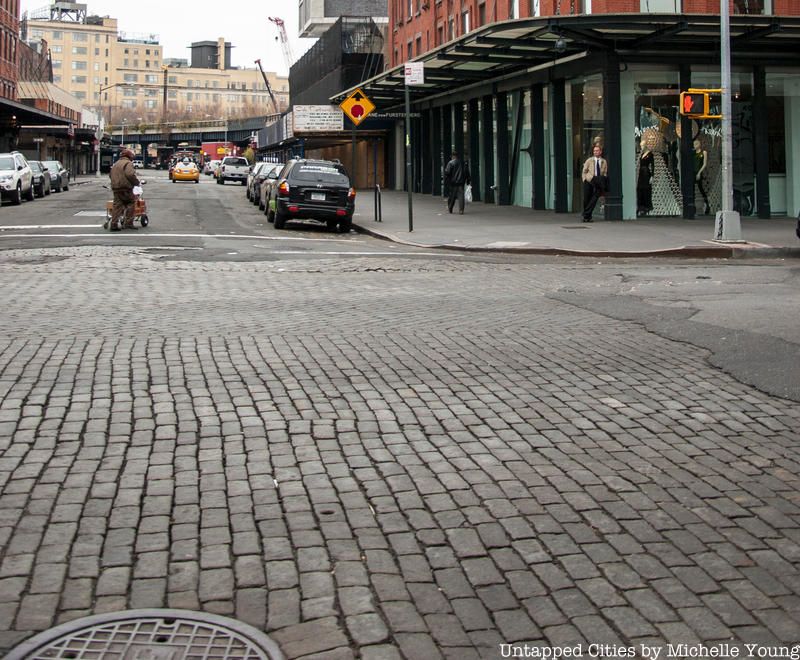
John Jacob Astor immigrated from Germany and arrived in New York in the late 1700s. Originally engaged in the fur trade, he began buying property in 1799 and by 1830 had turned his attention from fur to real estate. A shrewd businessman, he had a knack for seeing a piece of land’s potential and transforming it into a profitable property. He would buy up cheap tracts of land and lock his tenants into long leases, telling them they could build on the land at their own expense. When the lease expired, he would either buy the house based on a valuation (usually lower than it should have been) or jack up the rent if the tenant wanted to renew. By the late 1800s, he was known as “New York’s landlord.”
Astor worked his way into the upper echelons of New York society by becoming a mason and befriending powerful men. One such man was Aaron Burr. Desperate for money after his duel with Alexander Hamilton, Burr signed over the lease of a large tract of land in what is now Greenwich Village. Astor owned much of Greenwich Village and the Meatpacking District, including all of Washington Street and parts of Little West 12th Street.
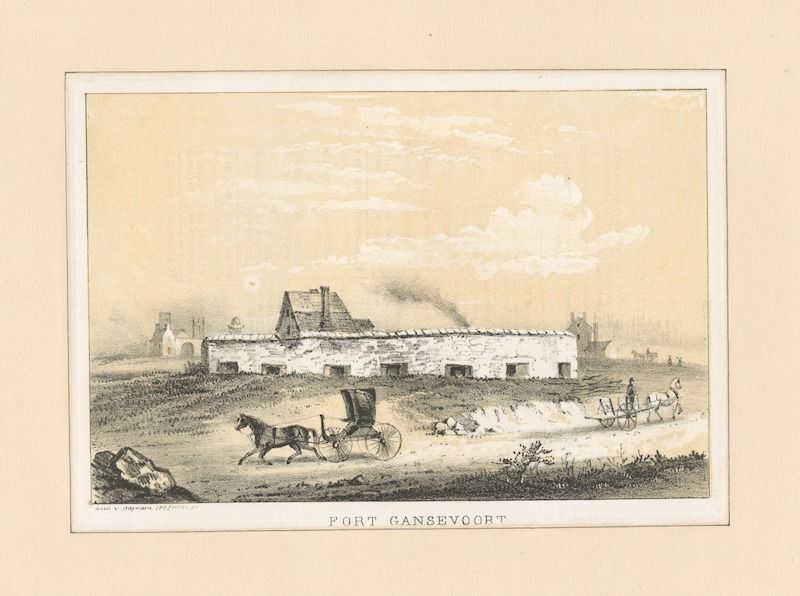
Fort Gansevoort once stood between Gansevoort Street and West 12th Street, strategically placed near the Hudson River to defend the city from attack during the War of 1812. Named for the Revolutionary War officer Peter Gansevoort, it was completed that year shortly before the outbreak of the war and mounted 22 guns, barracks, a magazine, arsenal, and shot furnace. However, the fort didn’t see action, as New York City wasn’t attacked during the war.
Fort Gansevoort was destroyed in either 1849 or 1854. An art gallery on the corner of Gansevoort Street and 9th Avenue adopted the name of Fort Gansevoort.
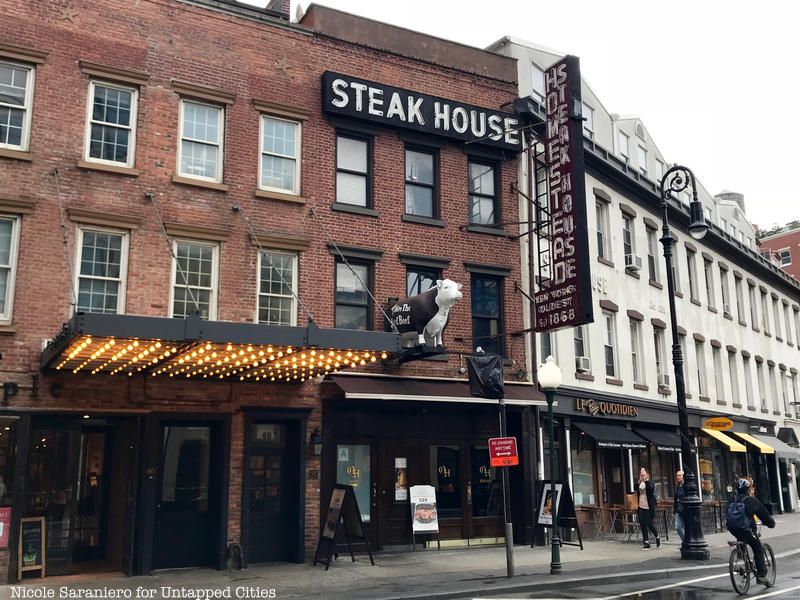
Though most of the meatpacking plants and warehouses have closed, you can still get a taste of meat in the neighborhood at the Old Homestead Steakhouse, which is one of the oldest restaurants in New York City. It opened in 1868, when chophouses became popular just after the Civil War, and is one of the longest operating restaurants in the nation. Originally called the Tidewater Trading Post because of its proximity to the Hudson, it was purchased by Harry Sherry and has been run by his family for over 70 years.
Aside from its age, the steakhouse’s claim to fame is that it introduced Waygu beef to the U.S. in the 1990s. Renowned as some of the world’s best beef, Waygu, or Kobe beef, produces some of the most expensive steaks you can buy. A Waygu burger at the Old Homestead Steakhouse will set you back $47.
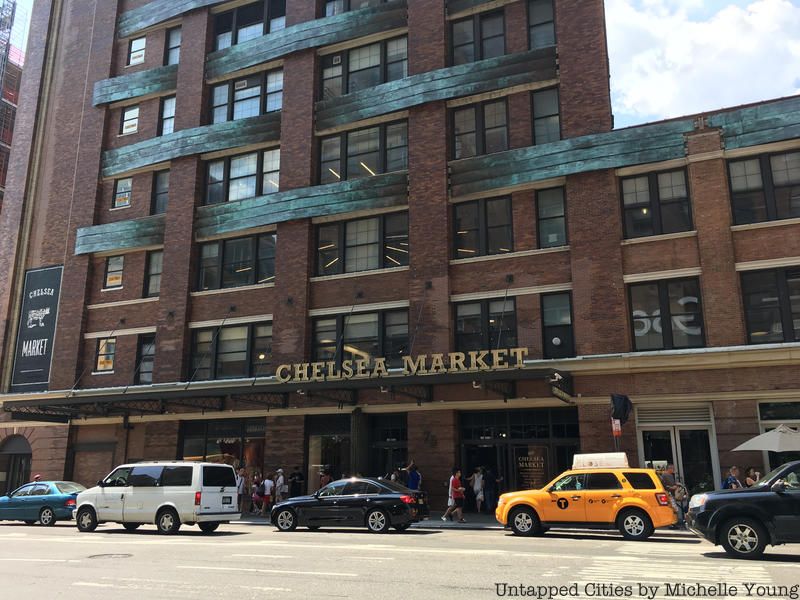
Before Chelsea Market was the bustling food and shopping destination it is today, it was the Nabisco factory. The National Biscuit Company was formed when eight bakeries came together to form a super-bakery, which opened on this site in 1890. Nabisco made products like animal crackers, fig newtons, and saltines, but arguably its most successful product is the Oreo cookie, which was invented in 1912. Both the recipe and the packaging have been basically the same ever since.
Though the factory is no more, you can find remnants of it, including two original murals on the brick walls and display cases dedicated to the factory’s industrial past. When the building was converted into a market, the architects upcycled original elements, including cast iron lamp posts on display near the 9th Avenue entrance and pipes used to create the pipe fountain.
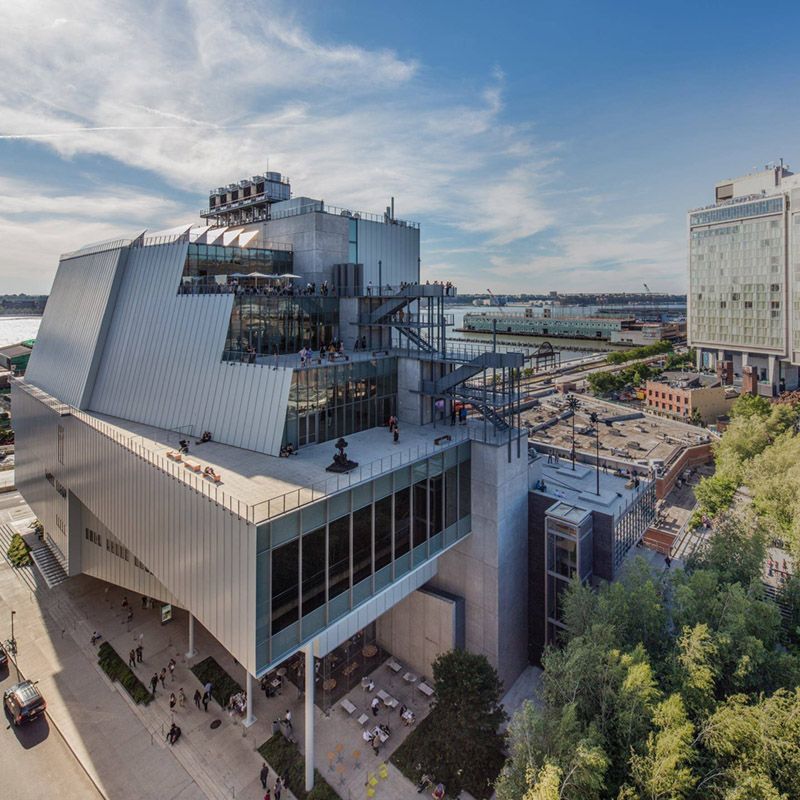
You might remember the Whitney’s former location in the Marcel Breuer building on Madison Avenue, but did you know that the Renzo Piano-designed building at the southern end of the High Line is actually the Whitney’s fourth home?
The Whitney Museum of American Art wouldn’t even exist if the Met had accepted Gertrude Vanderbilt Whitney’s donation in 1929. By then, she had amassed a collection of more than 500 works of art by American artists, many of whom were disregarded by traditional institutions. An artist herself and scion of the powerful Vanderbilt family, Gertrude established her own museum focused exclusively on American artists, primarily living ones, which opened in 1931 on West 8th Street. In 1954 the museum moved to an expanded site near MoMA, before moving again in 1963 to the Breuer building. It opened in its current location at 99 Gansevoort Street in 2015.
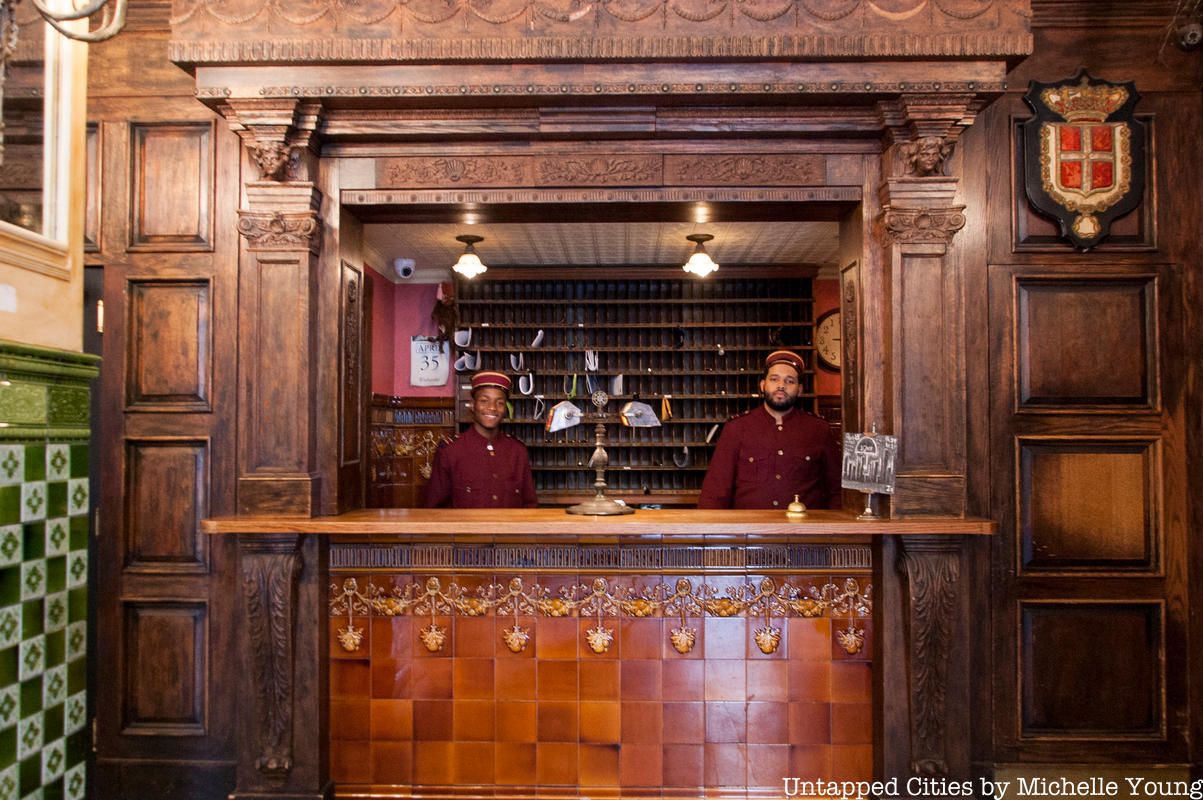
Right on the border of the Meatpacking District and Greenwich Village, the Jane Hotel was built in 1908 as the American Seamen’s Friend Society Sailors’ Home and Institute. Back when the area was a bustling port, sailors would hop off the ships docked nearby and check into a room for just 25 cents a night (50 to 75 cents for officers). The Institute had all kinds of amenities, including a bowling alley, a swimming pool, and a restaurant in the basement.
Those amenities have been lost or turned into storage, but the hotel still offers affordable cabin-sized rooms inspired by the interiors of the ships that once docked nearby. Nowadays, visitors can hang out at the Old Rose restaurant, the rooftop bar in the tower, and the ballroom. It was restored in 2008 by Sean Goode and Eric MacPherson, who kept the character of the historic building designed by the architects behind Ellis Island.
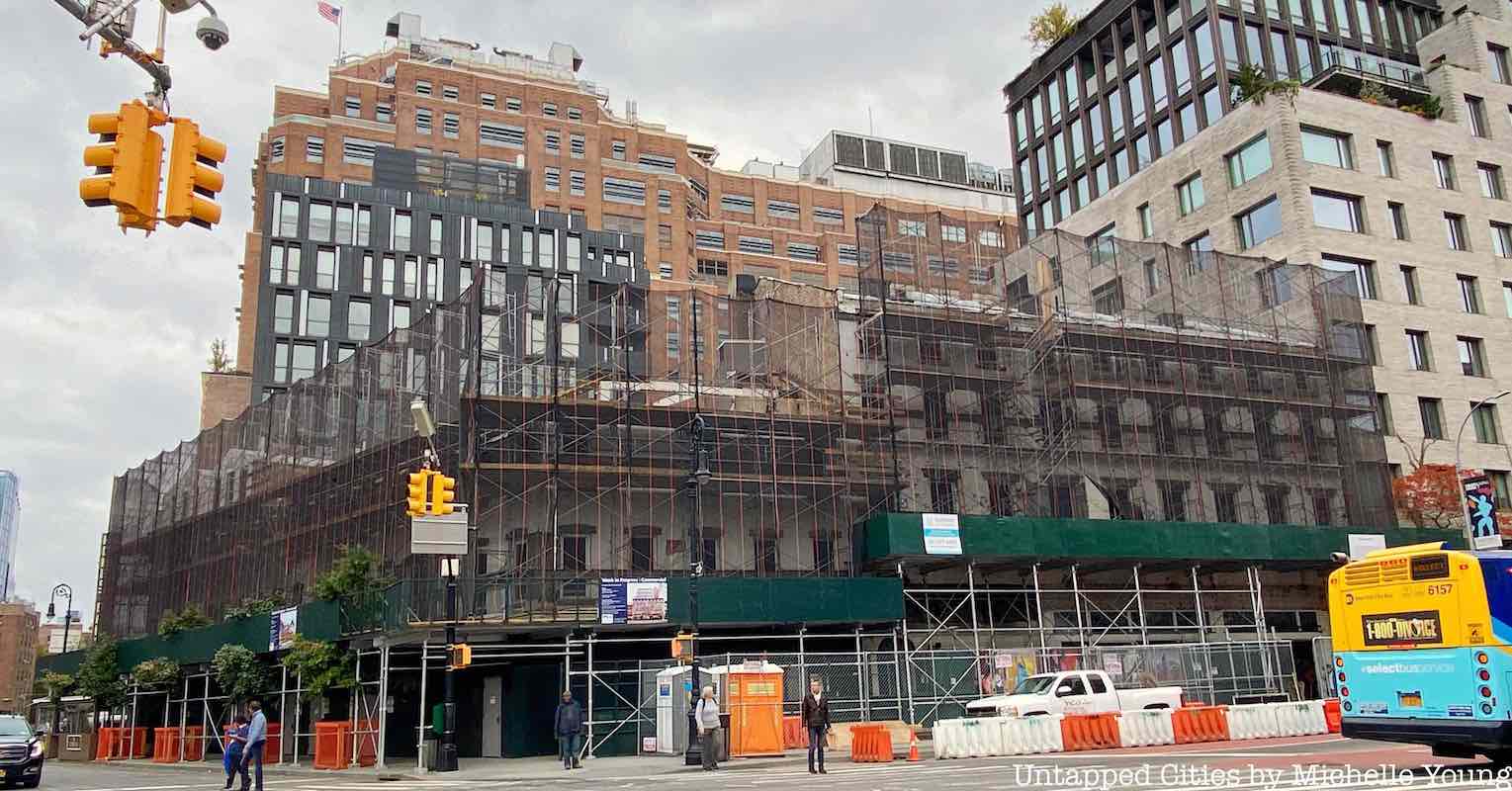
The Gansevoort Market Historic District makes up a good chunk of the Meatpacking District, roughly bounded by West 16th Street, 9th Avenue and Hudson Street, Gansevoort Street, West Street, and 11th Avenue. It comprises 140 contributing buildings, two contributing structures, the High Line, a lumber yard, and the historic street pattern of the neighborhood.
The oldest extant buildings date back to the 1840s and are the aforementioned Greek Revival rowhouses where merchants set up shops on the ground floor and lived on the upper floors. Other buildings in the historic district have been recognized for architectural elements like the overhangs that once served to protect produce from the harsh sun and rain. Unfortunately, nine landmarked townhouses from the 1840s near the Old Homestead Steakhouse are being partially demolished by a careless (or calculating) real estate developer.
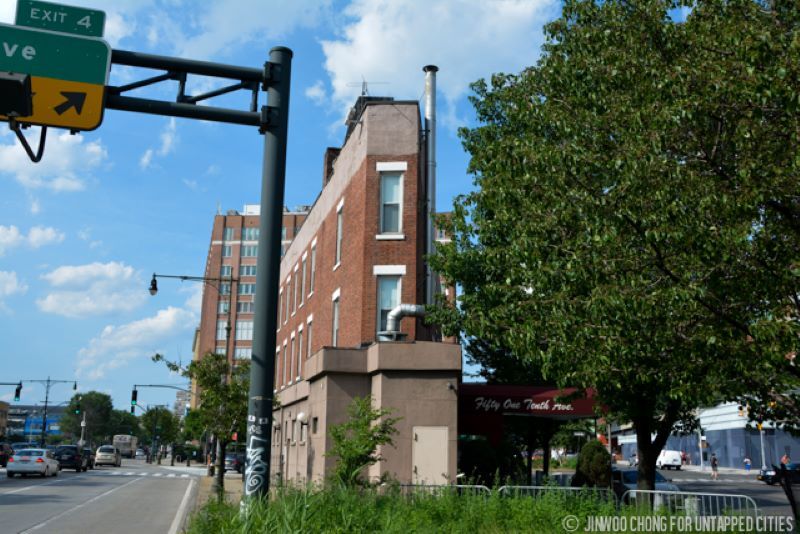
As you might expect, with so many longshoremen docking nearby, the Meatpacking District was home to its fair share of brothels and sex hotels. The Liberty Inn is the last one standing. It was built in 1906 as the Strand Hotel and got its current name in 1969. It’s one of Manhattan’s oddly shaped triangular buildings and is no more than three feet wide at its narrowest point.
The Liberty Inn still rents its rooms out on an hourly basis. The minimum is two hours, which costs $90 – $110 depending on the room category. The website boasts that the rooms have “eye-catching murals and paintings,” intimate mood lighting, and in-room adult movies. Romantic Interlude rooms have jacuzzis.
Next, read about the top 15 secrets of Greenwich Village!
Subscribe to our newsletter